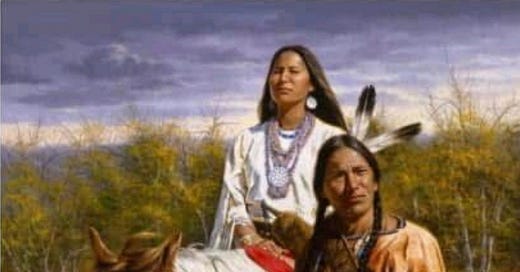The Forgotten Conflicts: Russian Encounters with Indigenous Peoples of Siberia, Kamchatka, and the Pacific Northwest
The history of Russian expansion across the vast territories of Siberia, Kamchatka, and into the Pacific Northwest, including Alaska, is fraught with numerous conflicts and massacres against indigenous populations.
This essay explores these lesser-known episodes of violence, which, due to their scale and impact, have left indelible marks on the indigenous communities involved.
Siberia:
The Russian Conquest of Siberia (1581-1778): The initial push into Siberia began with Yermak Timofeyevich's campaign against the Siberian Khanate in 1581. Throughout this period, Russian Cossacks encountered fierce resistance from various indigenous groups. The conquest was marked by:
Massacres of the Daur People (1651-1656): Under the leadership of Vasilii Poyarkov and Yerofei Khabarov, Russian forces conducted systematic killings, employing methods like rape and child abduction as part of their genocidal strategy.
Yakut and Koryak Massacres (1640s): The Yakut people saw about 70% population decline within 40 years due to violence and diseases like smallpox brought by the Russians. Similar tactics were used against the Koryaks, leading to significant population loss.
Violence Against the Yukaghir (17th Century): The Yukaghir population decreased dramatically due to epidemics, internecine wars, and Russian colonial policy, with many assimilating into other groups or being killed outright.
Kamchatka:
Itelmen Uprisings and Massacres (1706, 1731, 1741): The Itelmens' resistance to Russian rule resulted in brutal suppression, with the population reduced to just 3,000 by the 20th century from around 150,000 due to massacres, diseases, and forced labor.
Wars Against the Chukchi and Koryaks (1729-1747): Russian attempts to subjugate these groups led to multiple campaigns, with the Chukchi notably repelling Russian forces several times, only to face severe retaliatory massacres and enslavement, especially under Major Dmitry Pavlutsky's command in 1730-1731.
Genocide of Kamchatka Indigenous Nations (1740-1850s): The original population of approximately 150,000 was reduced to around 10,000, with at least twelve indigenous nations completely exterminated, their lands taken by Russian settlers.
The Pacific Northwest and Alaska:
The Russian-Indian War (1802-1805): As previously noted, this war included the Battle of Sitka in 1804, marking significant Russian-Tlingit conflict.
Expeditions Leading to Massacres:
The Awa'uq Massacre or Refuge Rock Massacre, or, more recently, as the Wounded Knee of Alaska, was an attack and massacre of Koniag Alutiiq (Sugpiaq) people in August 1784 at Refuge Rock near Kodiak Island by Russian fur trader Grigory Shelekhov and 130 armed Russian men and cannoneers of his Shelikhov-Golikov Company. This event stands out for its brutality and the impact on the local indigenous population.
1766: Armed Russian fur traders massacre Unangan (Aleut). The Russian trader, Ivan Solovief, arms his workers to murder Unangan (Aleut) men, women, and children in retaliation for their resistance to the sexual exploitation of Unangan women. Solovief's motives included:
Economic Gain: The control of the fur trade necessitated a compliant workforce, and reducing the indigenous population was seen as a means to secure this.
Control and Domination: By severely diminishing the Unangan numbers, Solovief aimed to establish Russian dominance and prevent further resistance.
Personal Power and Prestige: His actions were also about personal gain, enhancing his status within the Russian colonial hierarchy through displays of control and ruthlessness.
Legacy of Fear: The massacre served as a psychological deterrent to ensure obedience and compliance from other indigenous groups.
Solovief vowed to reduce the Unangan population from 25,000 to 2,500. The workers went to Umnak, Unalaska, and Kodiak Islands, where they systematically killed people and enslaved young women and men. Russians established control of the region following this massacre.
Grigory Shelikhov's brutality in 1783 on Kodiak Island.
Ivan Solovyov's massacre on Unalaska Island.
Ivan Kuskov's actions prior to founding Fort Ross in 1808-1809.
The clearing of Attu Island by Larion Belyaev, though the exact date is unclear.
Canadian Indigenous:
While there is less documentation on direct Russian involvement with Canadian indigenous peoples, the context of Russian-American Company activities in the region might have indirectly influenced or overlapped with British and later Canadian interactions with First Nations, particularly in areas like the Pacific Coast where Russian fur traders were active.
Historical Memory and Reconciliation:
The acknowledgment of these events in Russian historical discourse is sparse, often overshadowed by narratives of peaceful unification or expansion. The violence inflicted upon these indigenous groups was part of a broader pattern of colonial expansion that also included forced conversion to Christianity, cultural eradication, and environmental devastation through the fur trade.
Conclusion:
The expansion of Russian influence across Siberia, Kamchatka, and the Pacific Northwest was not merely a territorial conquest but involved the genocide, mass displacement, and cultural destruction of numerous indigenous groups. These actions have left a legacy of trauma and loss, which continues to influence the lives of descendants of these groups. Recognizing and understanding this history is crucial for any form of reconciliation and for a more truthful recounting of history.
Reference:
https://www.nlm.nih.gov/nativevoices/timeline/227.html




